Does your dog jump for joy when he hits the pool, beach, or anything wet? Maybe he crashes kiddie pools or belly flops into any body of water like our sausage dog Django. Or maybe your dog is downright afraid to dip his paw in the pool. Every canine is unique, and not all are dripping with excitement at the thought of getting wet.
Depending on your dog’s breed, personality, and experiences, he might be a natural swimmer or water-shy. We (Steph and Mike) were lucky because Django was comfortable in the water from puppyhood. When he was 9 months old, he wadded into a shallow lake, swam out 10 feet, fetched a stick, and then effortlessly swam back. Considering dachshunds have a reputation for being poor swimmers, we were shocked.
Whether your dog is a seafarer like Django or a landlubber, he needs to learn how to be safe in the water. You might want to catch a wave or backcountry canoe with your dog. Maybe you even have an inflatable kiddie pool or a swimming pool in your backyard. In this DJANGO Dog Blog article, we discuss the best and worst dog breeds for swimming and look at how long your dog can safely stay in the pool. We also explain how to teach your dog to swim and provide water safety tips.
CAN ALL DOG BREEDS SWIM?
Can all dogs instinctively swim? It is a common myth that all dogs are born with the ability to swim. While most pups will try to doggy paddle if they wind up in the water, this aquatic trot might be the total extent of their swimming abilities. Depending on your dog’s breed, personality, and experience, he might be water-phobic or an excellent swimmer. With short, 10-minute swimming lessons and a dog life jacket, every breed can learn how to swim.
WHICH DOG BREEDS ARE THE BEST SWIMMERS?
Certain dog breeds were born to swim because they were designed to work in water. Standard poodles, Labrador retrievers, and Boykin spaniels were bred to retrieve ducks and geese for hunters.
Newfoundland and Portuguese water dogs were developed to be water rescue dogs. They are trained to tow struggling and unconscious swimmers to the shore. If a small boat is stranded, they can also use a rope to pull the passengers and vessel over a mile.
American water spaniels, Irish water dogs, and Spanish water dogs have waterproof coats and webbed feet. Their rudder-like tails help them swim and dive. Whether these water-loving dog breeds are herding fish into nets or retrieving lost fishing equipment, their happy place is the water.
WHICH DOG BREEDS ARE THE WORST SWIMMERS?
While brachycephalic dog breeds might enjoy splashing in shallow water, they are not strong swimmers. To keep their faces above the water, French bulldogs and Pugs have to tilt their head back so far that their back end sinks.
Barrel-chested dog breeds like boxers and Boston terriers may also struggle to stay afloat. Dogs with long chests and short legs Pembroke Welsh corgis may have trouble maneuvering in deep water.
Pekingese and Shih Tzus have long, double coats that can become warm and water-logged. Hairless dog breeds like the Chinese crested dog cannot withstand the shock of plunging into moderately cold water.
HOW LONG SHOULD YOUR DOG SWIM?
Ten minutes of swimming is equal to about 40 minutes of running. With that in mind, here is how long your dog should swim based on his health, age, and breed:
- Long-nosed puppies like whippets can learn to swim when they are 2 months old. Puppies with smushed faces can start swimming when they are 5 months old. Puppies should swim under supervision in a small, shallow body of water for 5-10 minutes.
- Small dog breeds can swim for 10-15 minutes per day. Sporting and herding dog breeds can swim up to 30 minutes per day.
- Senior, sick, and obese dogs should swim between 15 and 20 minutes. Split their swimming sessions into smaller chunks, such as three 5-minute periods of exercise.
HOW TO TEACH YOUR DOG TO LIKE WATER
Is your pooch water-phobic? If yes, how do you introduce your dog to swimming? These steps will encourage your dog to like water without scaring him.
- Step 1: Before getting in the pool with your pup for swimming lessons, make sure he is not afraid of water. If he is startled by the sound of crashing waves or is scared of his water bowl, use a kiddie pool without any water. Is your dog afraid of slippery surfaces? Line the kiddie pool with a non-slip drainage mat or kennel decking. When your dog goes into it, give him praise and a high-value dog treat.
- Step 2: Fill the kiddie pool with an inch of lukewarm water. If your dog is hesitant to get into the water, go back to giving him praise and a treat each time he gets inside the pool. You can also stand inside the kiddie pool and encourage him to come in. Once your dog is inside, throw treats in the water. This treat-tossing game will teach him to blow bubbles out instead of swallowing water.
- Step 3: Add another inch or two of water to the kiddie pool and then repeat step 2. You can also have your pooch fetch a floating frisbee or tennis ball in the water.
HOW TO TEACH YOUR DOG TO SWIM
If your dog is already drawn to water, you can teach him to swim in 3 simple steps.
- Step 1: To ensure your dog's safety and wellbeing, always start him out with a high quality dog life jacket and attach his water-friendly dog leash. If you are in a swimming pool, first teach your pup how to safely stand and walk up and down the pool steps. If you are at a lake or by the ocean, lure your dog to the water's edge with high-value dog treats like plain chicken and turkey hotdogs.
- Step 2: Slowly carry your pup around in the shallow end while holding onto the handle of his life jacket and leash. Does your dog paddle with his front paws while his back legs dangle down? Put your arm under his belly until he uses all four limbs to swim. Keep this initial full-body swimming session short, 5-10 minutes max. The goal with this step is to get your dog comfortable in water with you at his side. You want him to become increasingly comfortable in the water. If your dog shows signs of fear or anxiety, leave the water and comfort him. Make sure he is completely calm before you try again.
- Step 3: Gradually move your pup into the deep end, still holding onto his life jacket and leash. Reward your dog with a high quality treat and ample praise for being in the water. Similar to Step 2, if your dog starts panicking, move to shallower water or dry land. Let him completely calm down before you try again.
Additional tips for success:
- Does your water-shy dog need a confidence boost? Let your beginner swimmer watch other canines swim on DOGTV or at the beach. Is your friend’s pup a seasoned swimmer? Let your flotation-device-wearing dog follow him around the pool or shoreline. Avoid pulling your puppy or young dog into the water, as this could instill more hesitation and fear in him.
- Is your dog turned off by unnatural, bright blue pool water? Teach him to swim in a natural body of water like a stream or a pond.
- Lastly, please remember to wear a life jacket of your own, and avoid swimming in water that is too deep because your panicked pooch may try to escape by climbing on top of you.
IMPORTANT SWIMMING SAFETY TIPS FOR DOGS
Beat the dog days of summer with these water safety tips.
- Install a pet pool fence, and use a mesh or a solid safety pool cover.
- Consider investing in a pool safety alarm. If your dog weighs more than 15 pounds, it will ring if he falls into the water.
- Puppies and small dog breeds need 4 hours to digest their food. It takes 8 hours for large dog breeds to digest their meal. To prevent your dog’s stomach from twisting (gastric dilatation-volvulus), wait 1.5-2 hours after eating before hitting the water.
- Does your pool-obsessed pup have a dull, brittle coat and dry, itchy skin? Excessively high chlorination levels can strip dog coats of their natural oils. Ultra-high chlorine levels can also bleach dark coats and turn lighter coats green. Make sure your swimming pool chemicals are balanced, and consider spritzing your dog with a coat conditioner that has sunscreen like Bodhi Dog Moisturizing Sun Spray.
- Dogs with naturally thin hair, light fur, or pink noses are most at risk for sunburn and skin cancer. Use an unscented, waterproof dog sunscreen with an SPF of 30 (97% protection).
- If your dog is swimming in a lake or river, watch out for shells or rocks that can cut his paws. Water snakes also sunbathe on flat rocks, take refuge under logs, and hang on plants near the water’s edge. Swimming at the beach? Watch out for sharks, jellyfish, stingrays, scorpionfish, and lionfish.
- Stay away from fishing and boating areas. Dogs can be killed by boat propellers. Fishing hooks can get stuck in your dog’s face, lip, paw, or skin. If he swallows a baited fishing hook, fishing line, or leaden sinker, take him to a 24-hour animal hospital immediately.
- Before letting your dog take a dip in the ocean, make sure the water and air temperature add up to at least 100°F (37°C). When the water is below 50°F (10°C), he is at risk of limber tail, also known as swimmer’s tail or broken wag. This cold-water condition can cause your dog’s tail to droop between his legs. His tail may also stick straight out behind him before slightly curving. Beagles, Hounds, Labrador retrievers, Pointers, and Setters tend to overuse their tails.
- Hot tubs are not safe for pets. While sweating through his paws helps your dog cool down a little, he mostly relies on panting to control his body temperature. With a max water temperature of 104°F (40°C), he will tire himself out panting and may suffer from heat stroke.
- Because most dogs swallow some water when they swim, waterborne diseases like Giardia are a concern. Make sure your pup has fresh, clean drinking water.
- Does the water have a thick layer of green, blue, or red slime? Blue-green algae (cyanobacteria) grow in freshwater when the weather is sunny and above 75°F (24°C). If your dog drinks from stagnant swamps, ponds, or lakes, it can cause seizures and shut down his liver and respiratory system. Blue-green algae can also stick to his coat, so rinse it thoroughly with cool water after every swim.
BEFORE YOU GO
Have any questions or comments about dog swimming lessons? Want to share how you taught your dog to swim? Please leave a comment below. We cannot wait to hear from you!

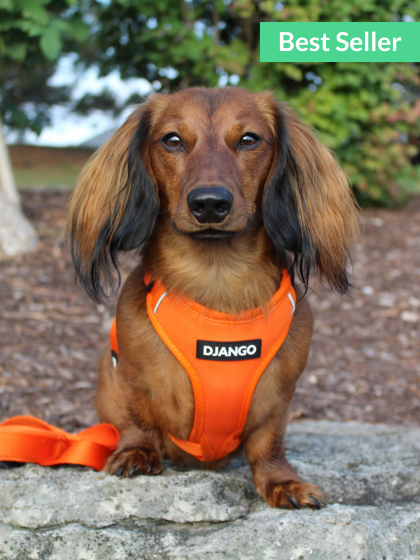
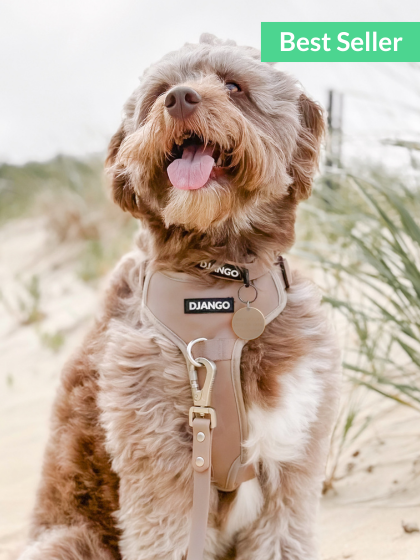



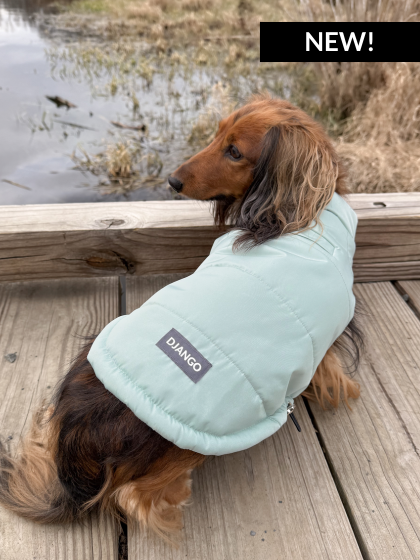
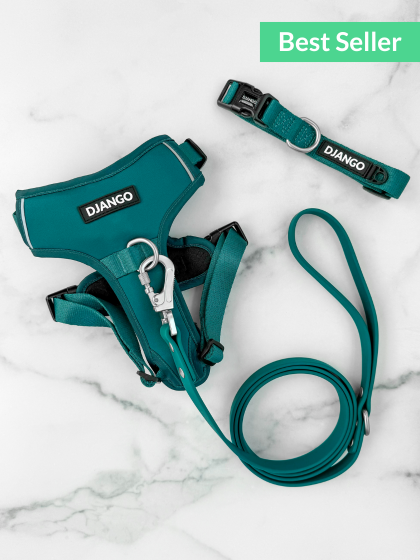
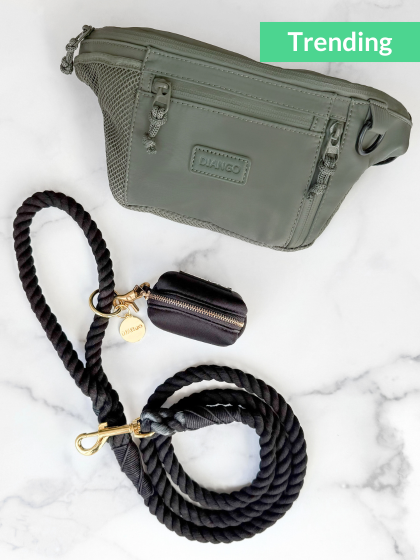


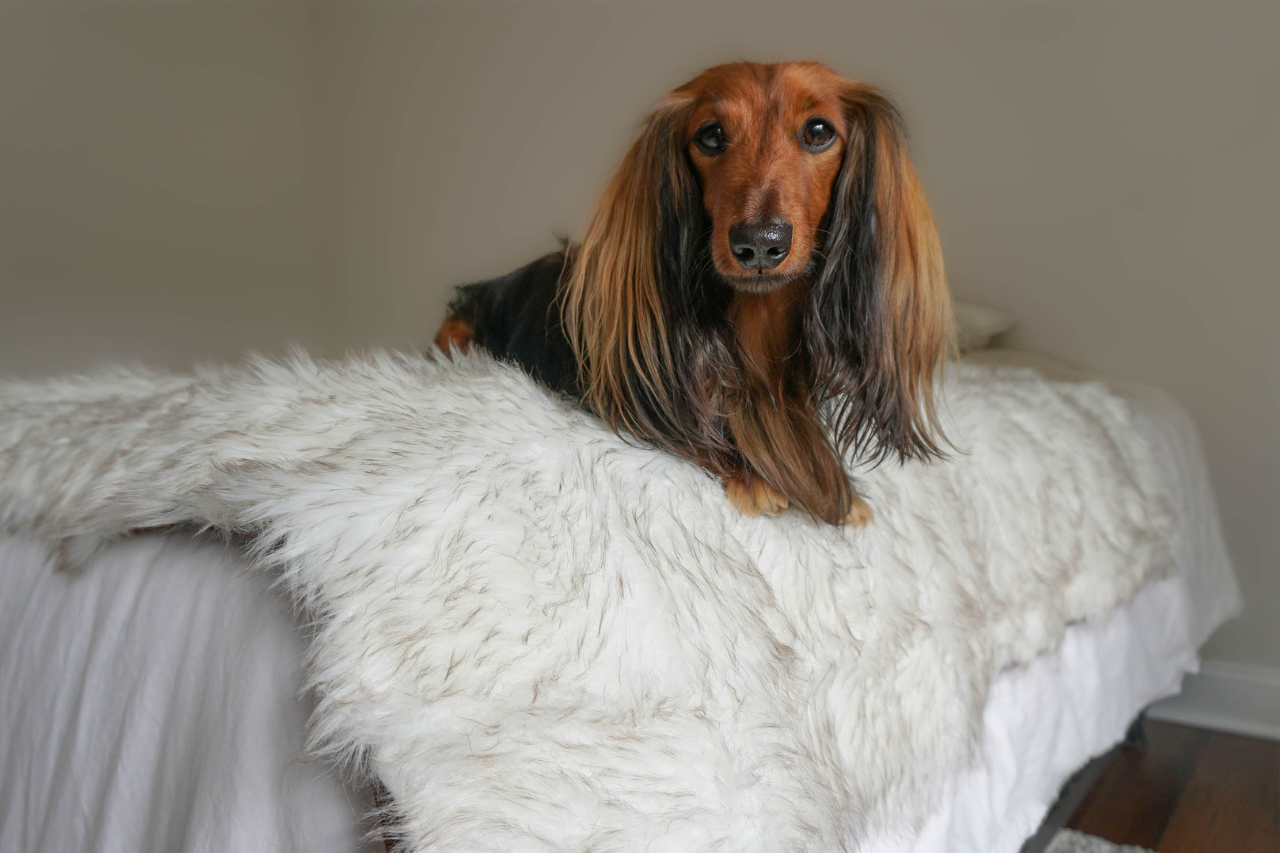
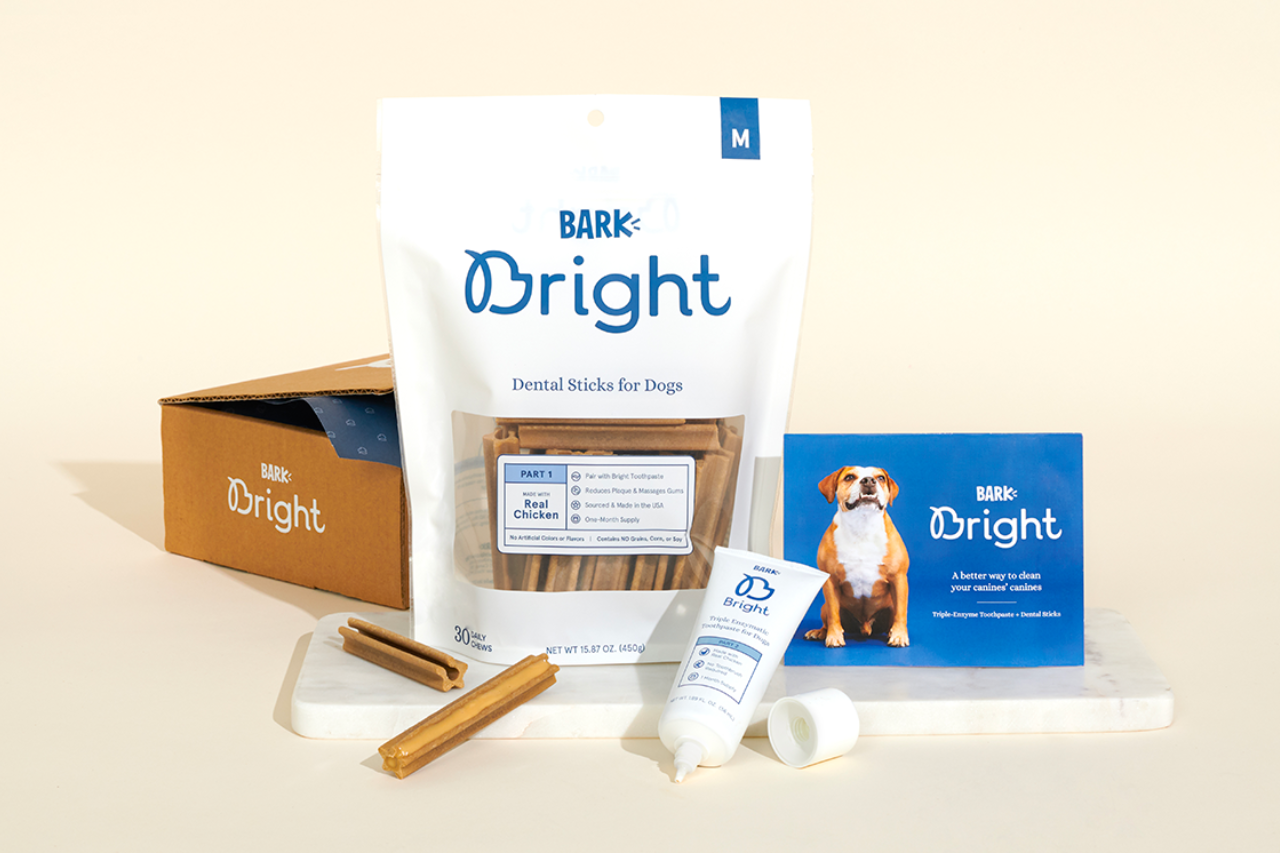

4 comments
PoolPac
Django Brand, your beginner’s guide to teaching dogs how to swim is a wonderful resource for dog owners. Safety and a gradual introduction to swimming are crucial, and your step-by-step approach provides a great starting point. The emphasis on positive reinforcement and understanding the unique needs of individual dogs is commendable. Thank you for sharing this helpful guide!
For MoreInfo: https://www.poolpac.co.nz/
Django Brand, your beginner’s guide to teaching dogs how to swim is a wonderful resource for dog owners. Safety and a gradual introduction to swimming are crucial, and your step-by-step approach provides a great starting point. The emphasis on positive reinforcement and understanding the unique needs of individual dogs is commendable. Thank you for sharing this helpful guide!
For MoreInfo: https://www.poolpac.co.nz/
Pool Supplies Online
This article is meant as an introduction to the process of teaching a dog to swim. The author provides advice, cautions, and detailed instructions for getting dogs comfortable in the water and teaching them to swim. The content is well-written and instructive, with examples and guidance from both experts and regular people. This post is beneficial if you have a dog and wish to introduce them to swimming or enhance their aquatic skills.
For More Info:- https://poolandspasupplystore.com/
This article is meant as an introduction to the process of teaching a dog to swim. The author provides advice, cautions, and detailed instructions for getting dogs comfortable in the water and teaching them to swim. The content is well-written and instructive, with examples and guidance from both experts and regular people. This post is beneficial if you have a dog and wish to introduce them to swimming or enhance their aquatic skills.
For More Info:- https://poolandspasupplystore.com/
Charlotte Fleet
I’m glad you mentioned the importance of ensuring the safety and well-being of your dog before they start swimming. I think the best way to ensure a dog’s safety during swimming lessons would be to hire a professional training service. They’ll have the knowledge and supplies to make sure your dog is completely safe during its lessons. https://rummysbeachclub.com/huntsville-tx
I’m glad you mentioned the importance of ensuring the safety and well-being of your dog before they start swimming. I think the best way to ensure a dog’s safety during swimming lessons would be to hire a professional training service. They’ll have the knowledge and supplies to make sure your dog is completely safe during its lessons. https://rummysbeachclub.com/huntsville-tx
Mehrin
Hello! i really enjoy your blogs, and you know its really helpful.. but one thing i observed is the blog writers name is not mentioned? i just wanna know you the writer of these amazing blogs is.
Hello! i really enjoy your blogs, and you know its really helpful.. but one thing i observed is the blog writers name is not mentioned? i just wanna know you the writer of these amazing blogs is.